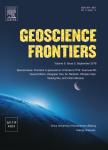Rapid screening of Zr-containing particles from Chang’e-5 lunar soil samples for isotope geochronology:Technical roadmap for future study
Rapid screening of Zr-containing particles from Chang’e-5 lunar soil samples for isotope geochronology:Technical roadmap for future study作者机构:Key Laboratory of Earth and Planetary PhysicsInstitute of Geology and GeophysicsChinese Academy of SciencesBeijing 100029China State Key Laboratory of Lithospheric EvolutionInstitute of Geology and GeophysicsChinese Academy of SciencesBeijing 100029China College of Earth and Planetary SciencesUniversity of Chinese Academy of SciencesBeijing 100049China Key Laboratory of Lunar and Deep Space ExplorationNational Astronomical ObservatoriesChinese Academy of SciencesBeijing 100012China Institute of High Energy PhysicsChinese Academy of ScienceYuquan Road 19BShijingshan DistrictBeijing 100049China Beijing National Laboratory for Condensed Matter PhysicsInstitute of PhysicsChinese Academy of SciencesBeijing 100190China
出 版 物:《Geoscience Frontiers》 (地学前缘(英文版))
年 卷 期:2022年第13卷第3期
页 面:68-78页
核心收录:
学科分类:07[理学] 08[工学] 0708[理学-地球物理学] 070401[理学-天体物理] 082503[工学-航空宇航制造工程] 0704[理学-天文学] 0825[工学-航空宇航科学与技术]
基 金:the National Key R&D Program of China(2018YFA0702600) the Key Research program of Chinese Academy of Sciences(ZDBS-SSW-JSC007-13) the institute of Geology and Geophysics,Chinese Academy of Sciences(IGGCAS-202101) the National Natural Science Foundation of China(grants no.41890843,41920104009)
主 题:Chang’e-5 lunar samples Zr-containing particles mXRF Correlative workflow Technical roadmap Extraterrestrial samples
摘 要:New samples returned by China Chang’e-5(CE-5)mission offer an opportunity for studying the lunar geologic longevity,space weathering,and regolith *** age determination of the CE-5 samples was among the first scientific questions to be ***,the precious samples,most in the micrometer size range,challenge many traditional analyses on large single crystals of zircon developed for massive bulk ***,we developed a non-destructive rapid screening of individual zirconium-containing particle for isotope geochronology based on a Micro X-ray fluorescence analysis(μXRF).The selected particles were verified via scanning electron microscopy(SEM),3D X-ray microscopy(XRM),and focused ion beam scanning electron microscopy(FIB-SEM)techniques,which showed that zirconium-bearing minerals with several microns were precisely positioned and readily suitable for site-specific isotopic dating by second ion mass spectrometry(SIMS).Such protocol could be also appli-cable in non-destructively screening other types of particles for different scientific *** there-fore proposed a correlative workflow for comprehensively studying the CE-5 lunar samples from single particles on nanometer to atomic *** various microscopic and spectromicroscopic instru-ments together,this workflow consists of six steps:(1)single-particle selection with non-destructive μXRF technique,(2)2D/3D morphological and structural characterization with a correlative submicron 3D XRM and nanoscale resolution FIB-SEM imaging methods,(3)SEM analysis of the surface morphology and chemistry of the selected particle,(4)a series of microscopic and microbeam analyses(e.g.,SEM,electron probe microanalysis,and SIMS)on the cross-section of the selected particle to obtain structural,mineralogical,chemical,and isotopic features from the micron to nanometer scale,(5)advanced 2D/3D characterization and site-specific sample preparation of thin foil/tip specimens on a microregion of inter-est in



